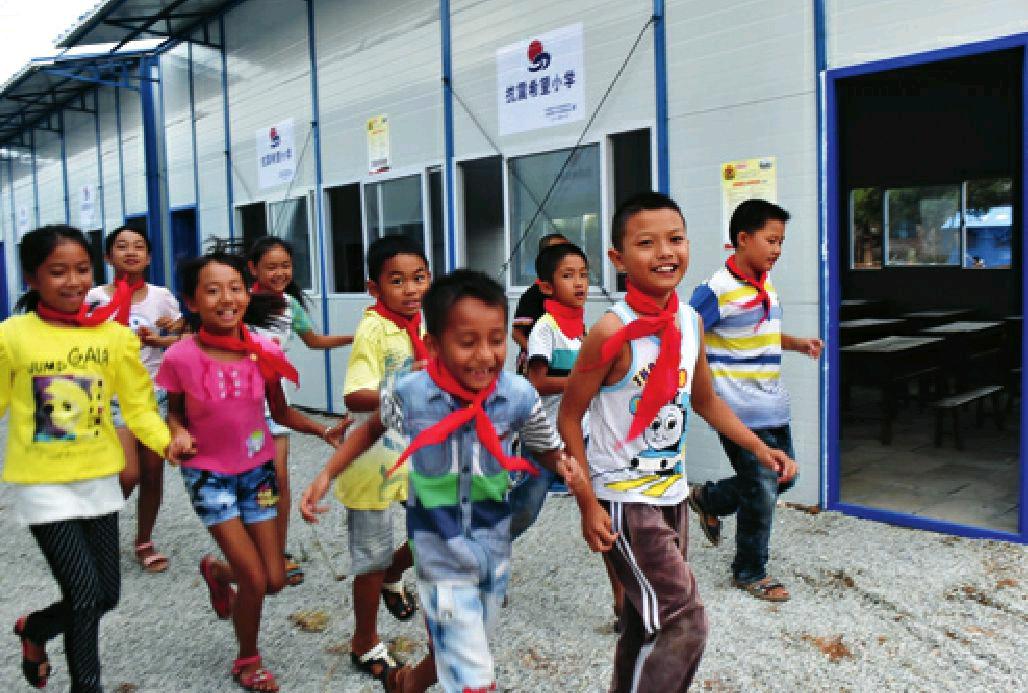A Quarter Century Of Hope
2014-11-10ByYuanYuan
By+Yuan+Yuan

Fan, an 18-year-old girl who declined to reveal her full name, is a new student at Shanxi Medical University this year. By the end of September, she had received 5,000 yuan ($815) from Project Hope as financial aid, which helped relieve her familys financial stress by supporting her college education.
Fans parents died in an accident in 2004, leaving Fan to be raised by her grandparents, who struggled to save wherever they could to support Fan and her education. Ultimately, they still couldnt afford to send Fan to college by themselves, despite their efforts.
Fan turned to Project Hope for help and after two weeks, she received financial help from it. “Ten years ago, my parents were lost, but my grandparents spared no efforts in raising me,”said Fan. “I can finally start college and I am very grateful to all the people that helped me. I will give it back by helping other people in need in the future.”
Altogether, there are 196 students in Lingwu, northwest Chinas Ningxia Hui Autonomous Region, have received financial aid for college from Project Hope.
The origins of hope
Project Hope started in 1989 with sponsorship from the Communist Youth League(CYL) Central Committee and the China Youth Development Foundation, with the goal of supporting young students in poverty-stricken areas that would not otherwise be able to continue their studies.
Zhang Shengli, born in 1975, left his school in Taomugeda Village of Laiyuan County in Hebei Province at the age of 12. Appearing to have no other options, Zhang wrote a letter to county officials expressing his strong desire to continue school. In the letter, Zhang described how difficult it was for his family to support his education and that he was going to have to quit.
The letter caught the attention of the Central Government, which prompted efforts to set up the project. Zhang was among the first to receive the grant-in-aid scholarships from the CYL on October 17, 1989.
Thereafter, the CYL Central Committee responded to the severe situation in povertystricken areas by establishing the China Youth Development Foundation on October 30, 1989, to subsidize children unable to go to school.
The projects short-term goal is to establish grant-in-aid programs in 328 poverty-stricken counties, with the long-term target centered on ensuring that all Chinese children receive an education.
In September 1990, late Chinese leader Deng Xiaoping wrote the inscription Project Hope to commemorate the initiative. The Development Program for Chinese Children promulgated by the State Council in March 1992 formally listed Project Hope as one of the main measures for ensuring the survival, protection and development of children.
With the projects subsidies, Zhang was able to finish middle school and pursue higher education at Shanghai Normal University. He later gave up job opportunities in cities and returned to his hometown to help village children fulfill their school dreams.
Now, Zhang is the deputy headmaster of a charity-funded primary school in his hometown Laiyuan, one of Chinas poorest counties. The school was established with funds from Project Hope in 2001 and has prevented hundreds of children from dropping out. Most of them are from impoverished villages, lacking tap water or paved roads.
“It is a difficult task to stop all these kids from leaving,” said Zhang, who revealed the picture of education in small villages is not an optimistic one for the time being with kids still quitting school from time to time. “I told them there is only one way to change their fate—knowledge.”
Gaining momentum
In 1991, photographer Xie Hailong, who was just a college student at the time, took a series of photos of school children in poor areas for the project. Among the photos, a girl holding a pencil and looking up from her desk with wide eyes soon became the image of Project Hope.
The girl, Su Mingjuan, is from a village in Jinzhai County of east Chinas Anhui Province. Born in 1983, Su was in primary school when Xie took the photo in her class. At that time, she needed to pay 100 yuan ($15.87) every semester for the school fee, but her familys farmland could only make enough to feed the family for three months.
With the help of Project Hope, Su got the chance to continue her education and in 2003 she passed the national college entrance exam and entered Anhui University. Now she is working in the Anhui Branch of the Industry and Commerce Bank of China.
“I know how important education is for a person,” said Su. “Without Project Hope, there would have been no way for me to be who I am now.”
Zeng Long, who was also sponsored by Project Hope, is also from Jinzhai County. With the aid from the project, Zeng entered Chinas prestigious Tsinghua University in 2001 and now holds a doctoral degree in physics.
“For me, Project Hope is like a boat, carrying me to the bank of knowledge, which was inaccessible to me before,” said Zeng. “I hope I can also serve as that kind of boat to more kids in the future.”
Jinzhai Hope School, where Zeng attended, was the first primary school supported by Project Hope in Anhui. In the past, there were not even enough chairs and desks, but now it has developed into a five-floor building with a library, multi-media classrooms and labs that serves more than 1,000 students.
In June 1995, the first Middle School under the projects support—the Shanghai Bell Nationality Hope Middle School—began construction in Wangcun Town, Yongshun County, central Chinas Hunan Province.
By the end of 2013, 9.76 billion yuan($1.59 billion) had been donated through Project Hope, supporting more than 4.9 million students and building 18,335 primary schools, according to the official website of the China Youth Development Foundation.
In order to supervise donations, six levels of Project Hope management were established in 1994: national, provincial, prefecture, county, town and school. A short time later, the China Youth Development Foundation established the computerized Project Hope Management Information System to ensure a strict management system subject to annual audits. The foundation has also introduced the Project Hope Social Supervision Day to ensure the standardization and transparency of the management system.
